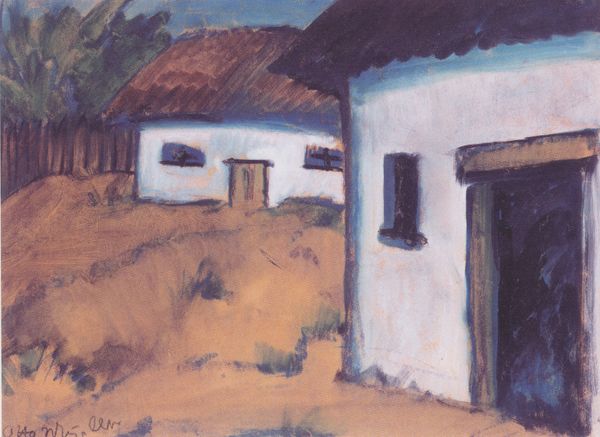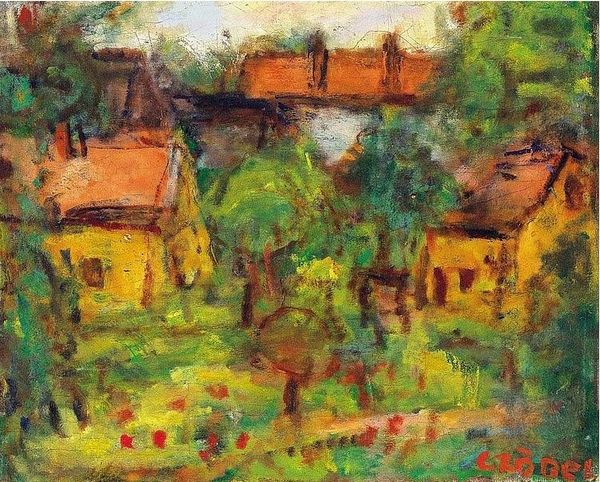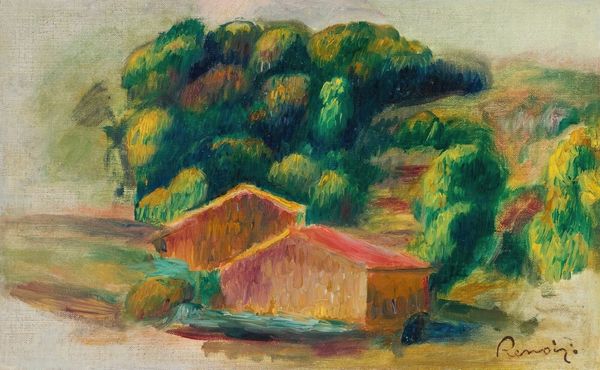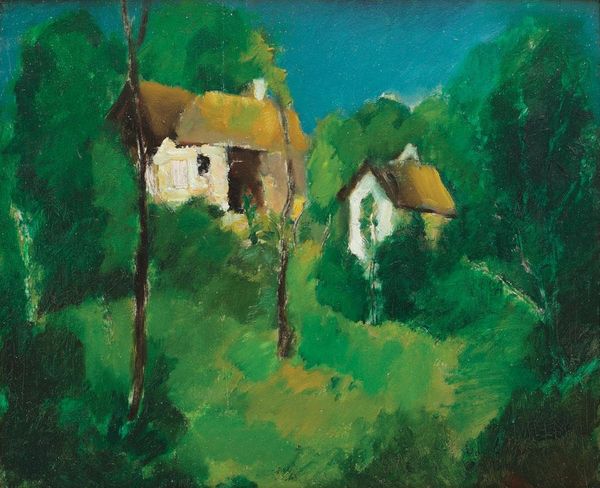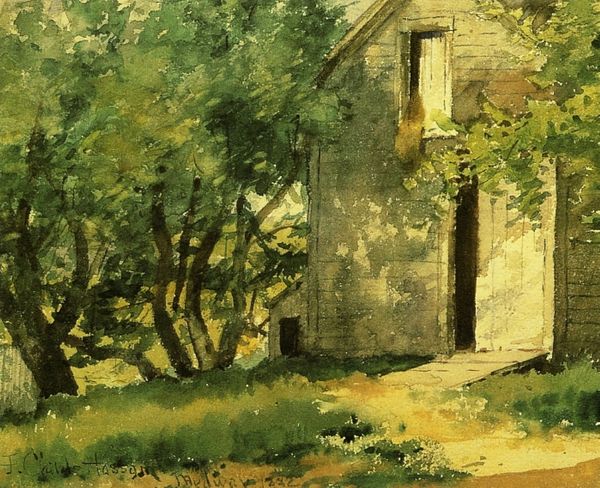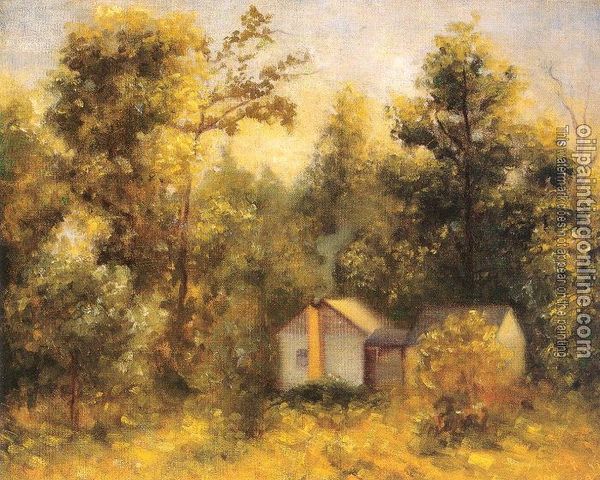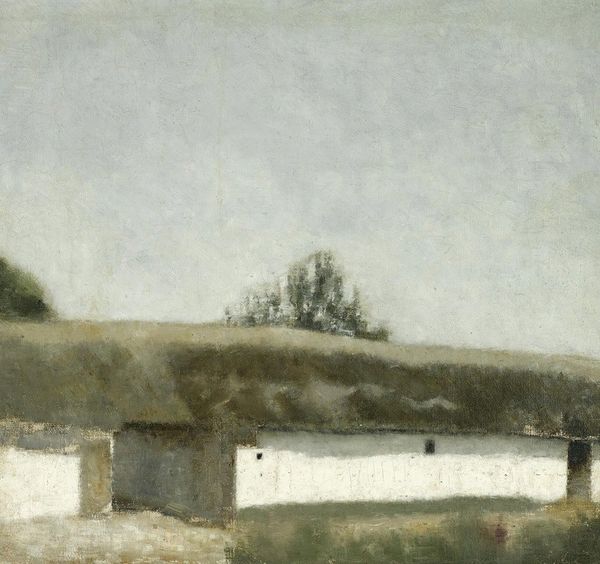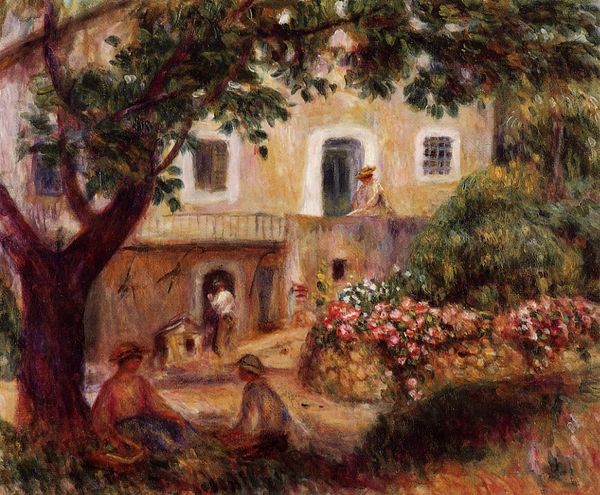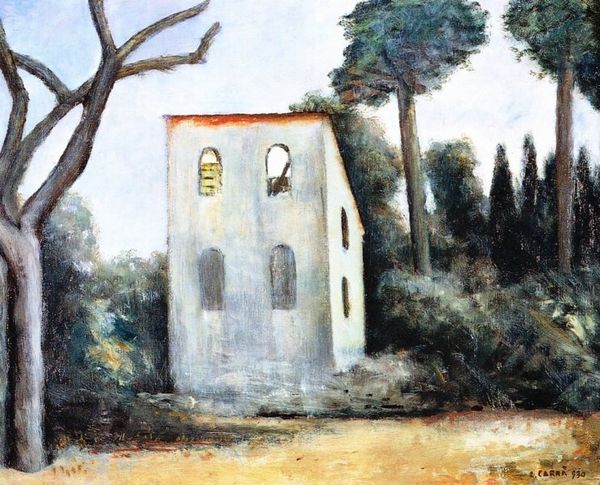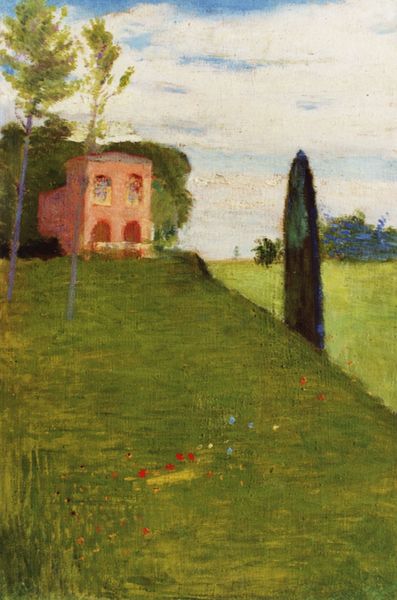
painting, plein-air, oil-paint
#
painting
#
impressionism
#
plein-air
#
oil-paint
#
landscape
#
oil painting
#
cityscape
#
genre-painting
Copyright: Public domain
Curator: We're looking at "The Little House," an oil painting, thought to be done by Pierre-Auguste Renoir. It’s part of a private collection, and showcases his approach to plein-air painting. Editor: My initial reaction is one of peaceful enclosure. The house is almost swallowed by the surrounding greenery. It has a very comforting, if somewhat withdrawn, atmosphere. Curator: Note how Renoir uses short, broken brushstrokes, typical of the Impressionist style. It's particularly noticeable in the foliage; the light seems to shimmer. There’s a flattening of the perspective as well, making it more about the visual impression than realistic spatial depth. Editor: Precisely. The placement of the house, dwarfed by the dense vegetation, speaks to a specific relationship between the built environment and nature, doesn't it? Perhaps mirroring a growing urban anxiety regarding industrial expansion, it highlights the pre-industrial, romantic countryside that was increasingly being displaced. Curator: Possibly. Or it might reflect Impressionism’s move to paint modern life which involved escaping Paris for a scene such as this. He is known for his figures. While absent here, he renders this scene with a clear focus on light, color, and atmosphere above sharp details, creating a dreamy almost idyllic setting. Note also the somewhat muted palette—a range of greens and yellows that, to my eye, unify the composition. Editor: And yet that restricted palette emphasizes the little house's vulnerability, in a historical sense, not only is it shrinking into its landscape but this style emerged alongside a societal push toward modernity. Perhaps, we read too much into things at times. Curator: That’s the beauty of art, isn't it? Multiple interpretations exist. Ultimately the brushstrokes, the colors, and the composition blend to create a unified, though somewhat obscured, representation of nature and human integration, if hesitant. Editor: Indeed. On the surface, a quaint landscape, but layered with complexities that hint at the broader social anxieties of the time.
Comments
No comments
Be the first to comment and join the conversation on the ultimate creative platform.
